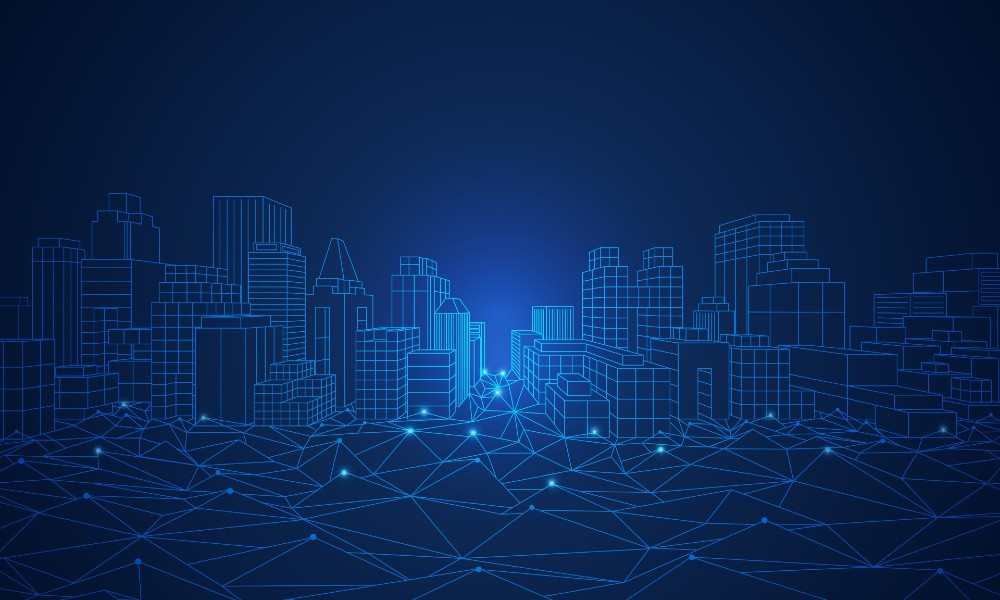
The word “SMART” refers to “self-monitoring, analysis, and reporting technology,” which is technology that uses artificial intelligence, machine learning, and big data analysis to provide cognitive awareness to objects that were in the past considered inanimate.
SMART technology itself has a wide variety of applications that pierce a number of industries, including SMART transportation, SMART manufacturing, or, most notably today, SMART buildings.
A smart building uses technology, such as Internet of Things (IoT) sensors, building management systems, artificial intelligence (AI), and augmented reality to enable efficient and economical use of resources while creating a safe and comfortable environment for occupants.
The creation of these buildings has already begun, with the global smart building market being valued at USD 67.60 billion in 2021 and expected to be USD 80.62 billion by the end of 2022. While there are plenty of smart buildings today, continued growth is expected, with experts predicting a stunning CAGR of 22.2 percent and a market value of USD 328.62 by 2029.
“Smart building technology in the early days does not come close to what is happening today,” said William Hurley, Chief Revenue Officer at VEEA, a leader in the edge computing space. The Veea Platform plays a key role in SMART Building and IOT management. “Smart buildings today include a broad range of solutions, from key systems to cameras to air quality and social distancing management following the pandemic, and environmental control systems which reduce energy usage while also helping to optimize the use of conference rooms and offices. The point-to-point connections do not offer the reliability or flexibility needed to support this wide variety of use cases. It is crucial for these edge points to be connected both to each other and to the central office in more reliable ways, with a lower risk of losing connectivity or bandwidth.”
This challenge creates a new opening for mesh networks to play an essential role in SMART building creation. Mesh networks are made up of a series of interconnected nodes. These nodes are wireless radio devices that communicate with one another, creating an overlapping mesh that does not rely on a central hub, which allows for quick and efficient data routing.
“Mesh networks are an effective way of meeting that demand, as they allow for more reliable, dynamic connections to be supported, with network topography automatically forming to create the most efficient route from point-to-point or end-to-end, ensuring that data and applications can be securely delivered and controlled across a wide range of environments,” Hurley said. “Add to that the many advantages of 5G connectivity which can improve not only external, cloud-based applications but can dramatically improve in-building coverage for wireless applications. The key is to support multiple devices, network protocols, and management systems in a way that property management teams, local and remote, can understand and interact with. This is where smart hubs come in.”
The wireless mesh network market was valued at USD 7.44 billion at the start of 2022, but as the SMART building industry continues to blossom, wireless mesh networks are expected to grow right alongside. Experts predict growth at a CAGR of 9.8 percent, with estimations putting the market value in 2028 at USD 16.53 billion.
“The predicted growth of wireless mesh networks should come as no surprise, as the advantages they can offer the creation of SMART buildings are plentiful,” Hurley said. “For example, by using mesh networks to keep all devices connected, a business can more effectively manage energy demand spikes and benefit from usage reduction impacting the cost per square foot to operate the building. Companies can so dramatically reduce energy usage through the implementation of Building Management System (BMS) monitoring and controls that the energy cost savings alone can drive a very solid ROI.”
Hurley also explained that an adequate mesh network can help decrease operational costs and increase revenue generation. From energy to supplies to staffing and space utilization, the right intelligent building systems provide a “dashboard” that can inform not just immediate costs savings in the first year but long-term savings that otherwise would add up as the cost of energy goes up.
Finally, mesh networks can even help make a SMART building more secure, both physically and digitally. Mesh networks are ideal for security systems because they need to be connected 24/7, often far outside the walls of a building. Traditional Wi-Fi is more likely to be crippled by dead zones and outages, which mesh networks are more resilient to. This tenacity enables security devices, such as smart cameras or locks, to remain reliably connected, even in nonideal circumstances,
“Overall, mesh networks can’t be beaten for their reliability, adaptability, and energy efficiency, and they are making a difference in numerous fields, connecting organizations and people all over the world,” Hurley said. “As for smart buildings, in particular, mesh networks provide resilient connections for people, devices, and communities – and when the same system that supports local mesh networking also works seamlessly with 5G and future generations of networks, the simplicity has obvious benefits.”
Edited by
Maurice Nagle





